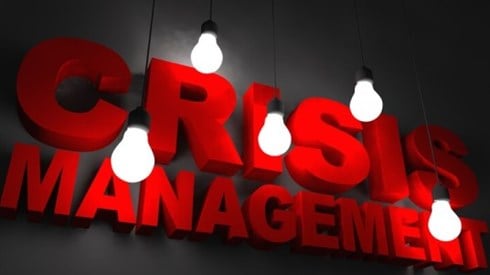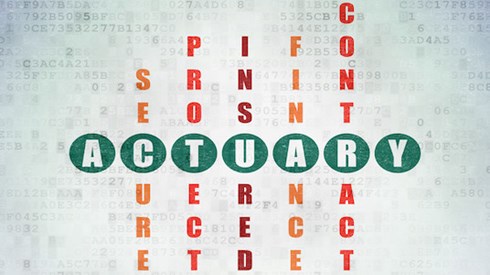Once Again, Mother Nature Provides a Lesson in Probability

February 24, 2021

Sometimes, Mother Nature provides an excellent example of a lesson in probability. This past week, that statement was demonstrated again by the catastrophic failure of the Texas power grid due to extreme cold weather.
According to various news organizations, the freezing cold temperatures in Texas caused some 185 power generating stations in the state to trip offline. As reported in Texas Tribune, "Texas' power grid was 'seconds and minutes' away from a catastrophic failure that could have left Texans in the dark for months, officials with the entity that operates the grid said [February 18]" ("Texas was 'Seconds and Minutes' Away from Catastrophic Monthslong Blackouts, Officials Say," by Erin Douglas, Texas Tribune, February 18, 2021).
Why the focus on the Texas story? It is an excellent reminder that captive insurance company managers and board members need to have a working knowledge of probability and statistics. Insurance relies on the law of large numbers to estimate how to realistically price the products offered and determine the frequency of future claims. The law of large numbers, which itself is based on probability and statistics, states that as the sample size increases, the derived average will grow closer to the actual average of the entire population.
Where people tend to get into trouble, however, is thinking that as those two averages converge and the differences become exceedingly small, it approaches zero. In insurance, we typically see loss information (like flooding) expressed as a 1-in-X-years table like the one shown below. We've included the corresponding percentage of the event not happening in the table as well.
1,000-YEAR FLOOD TABLE EXAMPLE
| Serious Flooding | Probability of Occurring in a Given Year | Probability of Not Occurring in a Given Year |
|---|---|---|
| 1 in 10 Years | 10.00% | 90.00% |
| 1 in 20 Years | 5.00 % | 95.00% |
| 1 in 50 Years | 2.00% | 98.00% |
| 1 in 100 Years | 1.00% | 99.00% |
| 1 in 500 Years | 0.20% | 99.80% |
| 1 in 1,000 Years | 0.10% | 90.90% |
What happens is that people tend to ignore the probability of an event happening when its likelihood becomes increasingly small. So, a 1,000-year flood, which is not likely to happen in 999 out of every 1,000 years, seems fairly remote. Not having a working knowledge of probability and statistics exacerbates this problem and doesn't alleviate it. As evidence, I encourage you to read When Genius Failed: The Rise and Fall of Long-Term Capital Management, by Robert Lowenstein. The mathematical horsepower in this firm was enormous, but it didn't prevent a catastrophe.
Now, I'm sure that risk managers of the Electric Reliability Council of Texas (ERCOT), the Texas power grid operator, probably had a table similar to the one above. The difference is that in this instance, the table ERCOT's risk managers probably relied on indicated the likelihood of a prolonged period of extremely cold weather and the impact on generating capacity. My guess is that the probability of this event was pretty small and the cost to retrofit the plants against this occurrence is fairly expensive, so my guess is that management did what many managers sometimes do and rolled the dice. Unfortunately, they paid the price, and so did many of the citizens of Texas.
Last March, I penned a column titled "COVID-19 and the Need To Think about Leadership and Crisis Management." It was based on an article from the Wall Street Journal, which included the line "great leaders are killjoys, nags, and neurotics until there is pandemic." I would add to that the following: True leaders appreciate the importance of probability and statistics and probably place more emphasis on the 0.10 percent than the 99.9 percent. That's what makes them great leaders. They "sweat the small stuff" and, in most instances, have gamed out the scenario to look for ways of mitigating the 0.10 percent.
Not surprisingly, these individuals are the exception rather than the rule. Estimates of the US population suggest 1 out of 5 (or 20 percent for those who are probability challenged) are severely math averse, and the significant majority experience some math anxiety. The Organization for Economic Cooperation and Development has reported that US adults rank below average in math when compared to their global counterparts ("Study: U.S. Adults Below Average in Literacy, Basic Math," by Scott Neuman, NPR.org, October 8, 2013).
Therefore, there is a better-than-even chance that your captive insurance company board really does not understand the information your captive's actuary is trying to convey. This can lead to two potential problems. First, your board declines to act on the recommendations of the actuary, resulting in losses in excess of the captive insurance company's ability to finance them. Sometimes, this even results in the outright failure of the captive. (See "3 Lessons from the Spirit Commercial Auto RRG Failure.") Conversely, it may also result in the captive insurance company not taking prudent risks that might be beneficial.
Regardless, captive insurance company managers and board members should have a working knowledge of probability and statistics. If for no other reason that knowledge can help them avoid the fate that befell Spirit Auto and ERCOT.
As always, we encourage your feedback and commentary. Please feel free to email John Foehl directly at [email protected].
Copyright © 2021, International Risk Management Institute, Inc.
February 24, 2021



